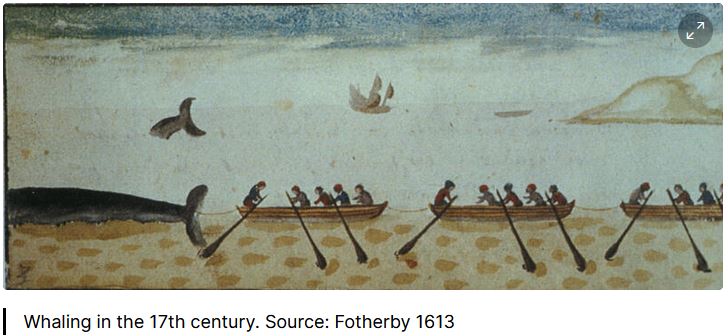1612 - The whaling industry
The whale industry took off in Svalbard, driven by a European demand for whale oil, baleen and walrus tasks. England and The Netherlands were the main participants at the start, with France, Spain, Germany and Denmark/Norway quickly joining the rush to exploit the area.
The area ended up being split predominantly between the English (who gained rights to hunt south from Magdalenefjorden) and the Dutch (who had control of the north-western corner of Spitsbergen)
In 1619 the Danish and Dutch whalers established the whaling settlement of Smeerenburg on Amsterdam Island in the north west of the archipelago. Smeerenberg means “blubber town”.
Early whaling activities were concentrated around the fjords in summer, with land-based settlements and processing structures set up; including ovens, vats etc. As well as living quarters, storage buildings and workshops.
As whales moved offshore, so did the whaling activities (known as pelagic whaling) Shore stations remained as emergency posts. By the end of the 17th century most of Europe’s maritime nations were participating with an estimated 200-300 whale and seal vessels hunting east of Greenland in the summers.
By the end of the 18th century bowhead whales were near extinction from over hunting, and so Western European whaling activities came to an end.
